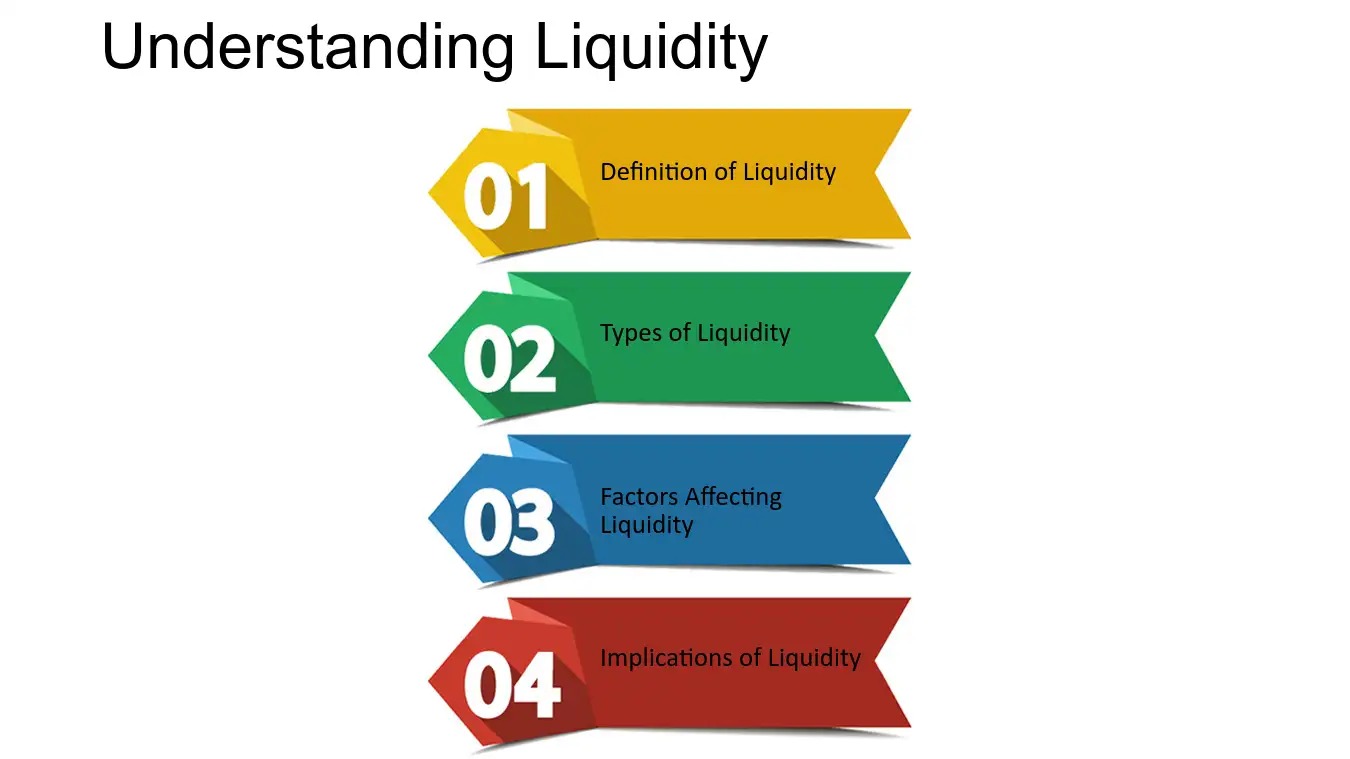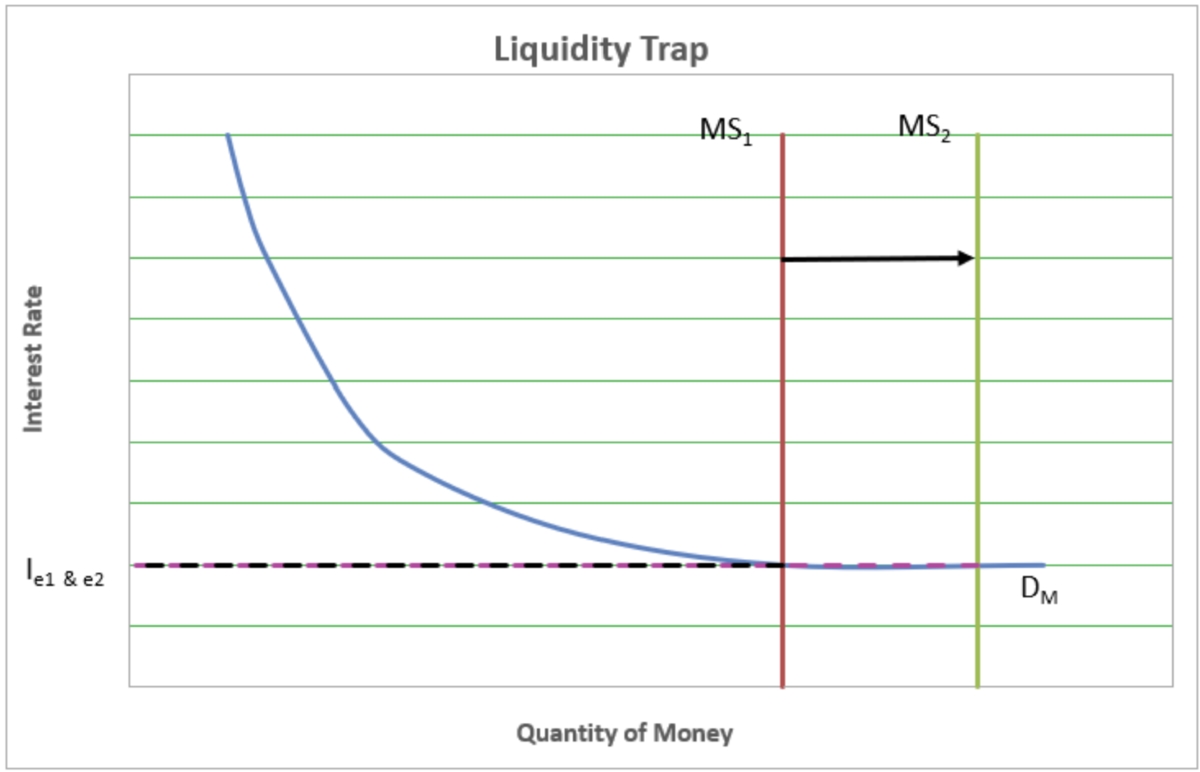

Finance
What Is A Liquidity Premium?
Published: February 23, 2024
Learn about liquidity premium in finance and how it affects investments. Understand the importance of liquidity premium in financial markets.
(Many of the links in this article redirect to a specific reviewed product. Your purchase of these products through affiliate links helps to generate commission for LiveWell, at no extra cost. Learn more)
Table of Contents
Introduction
The concept of liquidity premium is a fundamental aspect of finance that plays a pivotal role in the valuation of assets and investments. In essence, a liquidity premium represents the additional return that investors require in exchange for holding an investment with a lower level of liquidity. This premium serves as compensation for the increased risk and potential loss of flexibility associated with investing in assets that are less liquid.
In the realm of finance, liquidity refers to the ease with which an asset can be converted into cash without significantly impacting its market price. Generally, investments that are highly liquid can be swiftly bought or sold in the market, often with minimal impact on their value. On the other hand, investments with lower liquidity may involve a longer time frame or decreased ease in converting them into cash, potentially leading to a reduction in their value.
The liquidity premium is a critical component of the required rate of return on an investment. Investors typically demand a higher return when investing in assets with lower liquidity to compensate for the potential risks and limitations associated with these investments. This concept is deeply ingrained in the field of finance and is integral to various investment decisions, asset pricing models, and risk assessments.
Understanding liquidity premium is essential for investors, financial analysts, and market participants as it directly influences the valuation and attractiveness of different investment opportunities. By comprehending the factors influencing liquidity premium and its significance in the financial landscape, individuals can make more informed decisions regarding their investment portfolios and risk management strategies. Throughout this article, we will delve into the intricacies of liquidity premium, explore the factors influencing its magnitude, elucidate its importance in the realm of finance, and provide practical examples to illustrate its real-world implications.
Understanding Liquidity Premium
At its core, liquidity premium represents the additional return that investors expect to receive for holding an investment with lower liquidity. This premium serves as a form of compensation for the potential risks and limitations associated with investing in assets that may not be easily converted into cash without impacting their market value. In essence, it reflects the price that investors are willing to pay or receive for the trade-off between liquidity and return.
Investors are inherently averse to risk and value the ability to access their funds or adjust their investment positions swiftly. Consequently, assets with higher liquidity tend to be more attractive as they offer greater flexibility and ease of conversion into cash. As a result, investments with lower liquidity are deemed less desirable and necessitate a higher return to entice investors to hold them. This higher return, which constitutes the liquidity premium, acts as a risk premium to compensate for the potential difficulties in selling the investment or the risk of incurring a loss due to illiquidity.
Liquidity premium is intricately linked to the concept of market efficiency. In an efficient market, where all relevant information is reflected in asset prices, investors would require a higher return for investing in less liquid assets to offset the perceived risks. This phenomenon underscores the relationship between liquidity and expected return, emphasizing the fundamental role of liquidity premium in asset pricing and investment valuation.
Moreover, liquidity premium is not solely confined to the realm of individual investments. It also influences the pricing of various financial instruments, such as bonds and stocks, and contributes to the determination of their yield and expected returns. Understanding the dynamics of liquidity premium is crucial for financial professionals, as it enables them to gauge the inherent risks associated with different investment options and assess the impact of liquidity on overall portfolio performance.
By comprehending the concept of liquidity premium and its implications, investors and financial practitioners can make informed decisions regarding asset allocation, risk management, and the evaluation of investment opportunities. The next section will delve into the factors that influence liquidity premium, shedding light on the multifaceted determinants that shape this critical component of investment valuation.
Factors Affecting Liquidity Premium
The magnitude of liquidity premium is influenced by a myriad of factors that collectively shape the perceived risk and value of less liquid investments. Understanding these determinants is essential for comprehending the dynamics of liquidity premium and its impact on investment valuation. Several key factors play a significant role in shaping liquidity premium:
- Market Conditions: The prevailing market environment exerts a substantial influence on liquidity premium. During periods of market turbulence or economic uncertainty, investors typically demand a higher liquidity premium for less liquid assets to mitigate the heightened risks associated with market instability.
- Asset-Specific Characteristics: The inherent attributes of a particular asset, such as its market demand, trading volume, and ease of transferability, directly affect the liquidity premium. Assets with limited market demand or low trading volumes often command a higher liquidity premium due to the challenges associated with selling them swiftly without impacting their market value.
- Interest Rate Environment: Fluctuations in interest rates can significantly impact liquidity premium. In a low-interest-rate environment, investors may seek higher liquidity premiums for less liquid investments to compensate for the opportunity cost of holding assets that cannot be easily converted into cash.
- Regulatory and Legal Framework: The regulatory landscape and legal constraints surrounding the trading and transfer of assets can influence liquidity premium. Stringent regulations or legal complexities may elevate the liquidity premium for certain investments, reflecting the challenges posed by compliance and legal restrictions.
- Market Depth and Volatility: The depth of the market and the level of price volatility also contribute to liquidity premium. Deeper and more stable markets may warrant lower liquidity premiums, whereas shallow or highly volatile markets can necessitate higher premiums to offset the increased risks.
These factors collectively contribute to the determination of liquidity premium, reflecting the intricate interplay between market dynamics, asset characteristics, and external influences. By considering these determinants, investors and financial analysts can gain valuable insights into the underlying drivers of liquidity premium and make informed assessments of the risks associated with less liquid investments.
Importance of Liquidity Premium
The concept of liquidity premium holds immense significance within the realm of finance and investment. Its impact reverberates across various facets of the financial landscape, influencing investment decisions, asset pricing, and risk management strategies. Understanding the importance of liquidity premium is essential for investors, financial professionals, and market participants, as it underpins the valuation and attractiveness of different investment opportunities. Several key reasons underscore the significance of liquidity premium:
- Asset Valuation: Liquidity premium plays a pivotal role in the valuation of assets and investments. It affects the required rate of return for less liquid assets, influencing their market prices and overall attractiveness to investors. By incorporating liquidity premium into valuation models, financial practitioners can more accurately assess the intrinsic value of assets and make informed investment decisions.
- Risk Assessment: Liquidity premium serves as a crucial component in evaluating and managing investment risks. Assets with higher liquidity premiums are generally associated with greater risk due to their reduced ease of conversion into cash. Understanding and quantifying liquidity premium enables investors to gauge the inherent risks of less liquid investments and incorporate this factor into their risk management strategies.
- Investment Attractiveness: The presence of liquidity premium directly influences the perceived attractiveness of different investment options. Assets with lower liquidity premiums may be more appealing to investors, as they offer the potential for higher returns without significantly compromising liquidity. Conversely, investments commanding higher liquidity premiums may be viewed as riskier or less desirable due to the associated trade-offs.
- Market Efficiency: Liquidity premium is intertwined with the concept of market efficiency, reflecting the impact of liquidity on expected returns. By considering liquidity premium, market participants can gain insights into the efficiency of asset pricing and the rational behavior of investors in response to liquidity-related considerations.
- Portfolio Diversification: Understanding liquidity premium facilitates effective portfolio diversification. By assessing the liquidity characteristics and associated premiums of different assets, investors can construct well-diversified portfolios that balance liquidity considerations with return objectives, thereby optimizing risk-adjusted returns.
These aspects collectively underscore the pivotal role of liquidity premium in shaping investment decisions, asset pricing, and risk management practices. By recognizing the importance of liquidity premium, market participants can navigate the complexities of the financial markets more effectively and make informed choices regarding their investment portfolios and risk mitigation strategies.
Examples of Liquidity Premium
To illustrate the concept of liquidity premium and its real-world implications, consider the following examples that showcase the influence of liquidity on investment valuation and expected returns:
- Corporate Bonds: In the bond market, the liquidity premium plays a significant role in determining the yields and valuations of corporate bonds. Less liquid corporate bonds, characterized by lower trading volumes and limited market demand, often command higher liquidity premiums. Investors may require a higher yield to compensate for the reduced liquidity of these bonds, reflecting the additional risk associated with potential challenges in selling the bonds at favorable prices before their maturity.
- Real Estate Investments: Real estate assets also exhibit varying levels of liquidity premiums. Properties in highly sought-after locations with robust demand and active markets may command lower liquidity premiums, as they can be more readily bought and sold without significant price impacts. Conversely, properties in less liquid markets or with unique characteristics may necessitate higher liquidity premiums to attract investors due to the potential challenges associated with selling these assets swiftly.
- Emerging Market Stocks: Stocks traded in emerging markets often exhibit higher liquidity premiums compared to those in established, highly liquid markets. The increased risks and uncertainties associated with emerging market stocks, combined with lower trading volumes and market depth, contribute to the elevation of liquidity premiums. Investors may demand higher expected returns to compensate for the reduced liquidity and the potential challenges in swiftly exiting their positions in these markets.
These examples underscore the tangible impact of liquidity premium on investment valuation and expected returns across diverse asset classes. By recognizing the influence of liquidity on investment dynamics, market participants can make more informed decisions regarding their portfolio allocations and risk assessments, taking into account the nuanced implications of liquidity premiums in different market environments.
Conclusion
The concept of liquidity premium serves as a cornerstone in the realm of finance, exerting a profound influence on investment valuation, asset pricing, and risk management. By comprehending the intricacies of liquidity premium, investors and financial professionals can navigate the complexities of the financial markets more effectively and make informed decisions regarding their investment portfolios. The significance of liquidity premium is underscored by its impact on asset valuation, risk assessment, investment attractiveness, market efficiency, and portfolio diversification.
Throughout this article, we have explored the fundamental principles underlying liquidity premium, delved into the factors shaping its magnitude, and provided real-world examples to illustrate its implications across diverse asset classes. From corporate bonds to real estate investments and emerging market stocks, liquidity premium permeates various investment domains, influencing the expected returns and perceived risks associated with less liquid assets.
As market conditions evolve and asset dynamics fluctuate, the role of liquidity premium remains pivotal in guiding investment decisions and risk management strategies. By recognizing the importance of liquidity premium and its multifaceted determinants, market participants can enhance their ability to assess and quantify the risks and potential returns associated with different investment opportunities.
In conclusion, liquidity premium stands as a critical component of investment valuation, reflecting the trade-offs between liquidity and expected returns. Its pervasive influence underscores the necessity for investors and financial practitioners to incorporate liquidity considerations into their decision-making processes, thereby fostering a more comprehensive understanding of the risks and opportunities present in the dynamic landscape of financial markets.














